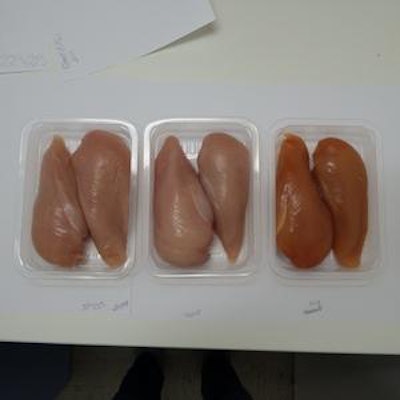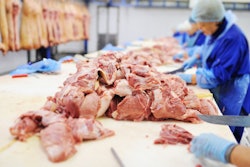
Novel protein triggers unique properties in meat, raising questions about potential uses
Novel protein feeds, such as insect meal and algae, can lead to unique properties in meat, which has some researchers asking questions about the potential opportunities and barriers these products face.
According to research at from the University of Göttingen, animals fed either insect meal or microalgae produced meat products that were, most of the time, comparable to products from animals raised with soybean meal. However, in a handful of circumstances, the novel diets resulted in unexpected outcomes that could either prove useful to gourmet products, or else trigger resistance from consumers.
In one study, chickens fed insect meal made from black soldier fly larvae produced meat with little detectable difference compared to the group fed soybean meal. However, another group fed spirulina produced meat with a dark orange color and intense chicken flavor. While the increased umami flavor should appeal to some consumers, Brianne Altmann, a researcher in the Department of Animal Sciences at the University of Gottingen, worries that the unusual orange color could be a hard sell.
“The color is apparent right after slaughter,” she said, “and it’s quite a stark difference. For us, it was very concerning, because if consumers are standing in the supermarket choosing their chicken breast and it’s orange, that’s could cause some issues.”
A separate study on swine yielded similar results. Though, overall, the three different diets had little effect on meat quality, the fly larvae in particular raised the saturated fatty acid content of the final meat products. The changed fatty acid profile, Altmann said, was so distinct it could be used as a biomarker to identify pigs raised on black soldier fly larvae.
The results of both studies, Altmann continued, raise questions about how consumers will respond to slight but potentially noticeable differences in meat products. In swine, the changes are unlikely to hold value for customers, who have an interest in omega-3, but could see increased saturated fats as displeasing. However, the fatty acid content of the insect-fed swine is very stable, which meat processors could find appealing for cured products like hams.
“That could potentially be the sector that it would make sense to feed insects, because processors already expect a premium for these products,” Altmann said.
Chicken could be trickier. Other than the color, Altmann said, the quality and nutrition of chicken raised on algae is good, and the flavor may even be better. This leaves the question of whether consumers will outright reject the chicken due to the orange color, or if marketers could perhaps communicate the differences.
“We’re very interested in understanding how consumers are going to adopt this,” Altmann said. “Especially in the EU, consumers can be alienated very quickly, so it’s important to know what their opinion would be.”
Future studies on consumers’ response to algae-fed chicken will be key, Altmann said, as will research into how insect feed may vary depending on the substrate they themselves are fed. Altmann’s research group plans to pursue both lines of research; however, she said insects seem to be emerging as the trendier alternative protein.









